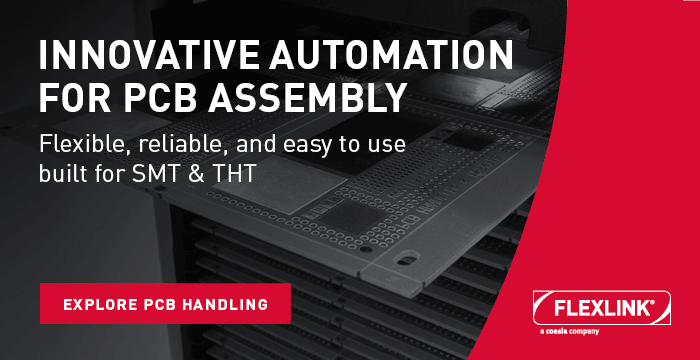Electronics Production |
New suppliers to Apple's new iPod
Teardown Analysis of Latest nano Reveals Extensive Component Changes.
Apple Inc. calls it the iPod nano—but the latest version of the company's compact music player introduced last week is virtually a completely new design, reusing almost no components and sporting a bevy of fresh suppliers compared to the previous model, according to a dissection conducted by iSuppli Corp.'s Teardown Analysis service.
Component suppliers making their nano product line debut in the latest version include
Micron.
Inc., Dialog Semiconductor GmbH and Intersil Corp., while Synaptics Inc. returns to the platform after an absence.
“The changes in components have resulted in significant cost reductions in the nano design, allowing Apple to offer a product that is less expensive to build and that has enhanced features compared to its predecessor," said Andrew Rassweiler, senior analyst and teardown services manager for iSuppli.
iSuppli's Teardown Analysis team has dissected the low-priced version of the new nano and has determined the product carries a Bill of Materials (BOM) cost of $58.85 for the 4Gbyte version and $82.85 for the 8Gbyte version.
iSuppli's estimate of the new nanos' BOMs is strictly limited to costs for components and other
materials used to construct the product. The estimate does not include costs for manufacturing,
software, intellectual property, accessories and packaging. The BOM figures also do not include research and development costs, since such data cannot be derived from a teardown
and component analysis.
The BOM of the new 4Gbyte nano is 18.5 percent lower than the $72.24 direct materials cost of the previous version of the nano released in late 2006. The new product has the lowest BOM of any member of the nano line analyzed by iSuppli.
 The retail price of the 4Gbyte version is $149, compared to a hardware BOM of $58.85. For the 8Gbyte version, the retail price is $199, compared to a hardware BOM of $82.85.
Apple's products traditionally have been sold at retail pricing that is about twice the level of their hardware BOM costs, based on iSuppli's teardown extensive analysis of devices including the iPhone, the iPod shuffle and previous members of the iPod nano line. This represents a high level compared to most electronic products.
For the new nanos, Apple has exceeded even its usual lofty standards.
The arrival of new nano semiconductor suppliers, Micron, Dialog and Intersil—and the return of Synaptics—has been accompanied by the departure of previous part providers, NXP
Semiconductors and Cypress Semiconductor Corp. in the latest version of the product.
Such wholesale supplier swaps are not unusual for Apple, which frequently switches its
component partners. With Apple, it seems, no supplier is safe, and no slot is a given.
U.S. semiconductor supplier Micron was the most notable addition to the nano. This represents the first time that iSuppli's Teardown Analysis Service has identified a Micron part in an iPod.
In the nano torn down by iSuppli, Micron was the maker of the high-density NAND flash memory that serves as media storage, worth $24 in the 4Gbyte version of the product and $48 in the 8Gbyte version. This gave Micron the largest single portion of value in the nano of any supplier at 40.8 percent for the 4Gbyte version and 57.9 percent for the 8Gbyte.
Apple's primary suppliers of NAND flash historically have been Korea's Samsung Electronics Co. Ltd. (which has been the dominant seller), Japan's Toshiba Corp. and Korea's Hynix
Semiconductor Inc. Micron is last in share position as a supplier to Apple for NAND flash, and only began shipping small quantities during the last year.
While this is a major win for Micron, Samsung remains the world's largest maker of NAND-type flash and is likely to continue to be used as a supplier by Apple, iSuppli believes.
One of the biggest and most important slots on the nano is the combined core video processor/microprocessor chip in the system, supplied by Samsung. Costing $8.60, the Samsung core IC processor accounts for 14.6 percent of the 4Gbyte version's BOM, and 10.4 percent of the 8Gbyte's BOM.
This is the second time around for Samsung's core processing IC in the nano line; in the version of the nano released in late 2006, Samsung supplied the core processing IC as well. Samsung also contributed 32Mbytes of Mobile SDRAM, worth $2.72, or 4.6 percent of the 4Gbyte BOM and 3.3 percent of the 8Gbyte BOM.
iSuppli tentatively forecasts that total iPod nano shipments will reach about 23 million units in 2007 and 27.9 million during 2008.
“Consumers will be interested in buying the nanos due to their enhanced features, mainly video capability and a high-quality display," said Chris Crotty, senior analyst, consumer electronics for iSuppli.
The retail price of the 4Gbyte version is $149, compared to a hardware BOM of $58.85. For the 8Gbyte version, the retail price is $199, compared to a hardware BOM of $82.85.
Apple's products traditionally have been sold at retail pricing that is about twice the level of their hardware BOM costs, based on iSuppli's teardown extensive analysis of devices including the iPhone, the iPod shuffle and previous members of the iPod nano line. This represents a high level compared to most electronic products.
For the new nanos, Apple has exceeded even its usual lofty standards.
The arrival of new nano semiconductor suppliers, Micron, Dialog and Intersil—and the return of Synaptics—has been accompanied by the departure of previous part providers, NXP
Semiconductors and Cypress Semiconductor Corp. in the latest version of the product.
Such wholesale supplier swaps are not unusual for Apple, which frequently switches its
component partners. With Apple, it seems, no supplier is safe, and no slot is a given.
U.S. semiconductor supplier Micron was the most notable addition to the nano. This represents the first time that iSuppli's Teardown Analysis Service has identified a Micron part in an iPod.
In the nano torn down by iSuppli, Micron was the maker of the high-density NAND flash memory that serves as media storage, worth $24 in the 4Gbyte version of the product and $48 in the 8Gbyte version. This gave Micron the largest single portion of value in the nano of any supplier at 40.8 percent for the 4Gbyte version and 57.9 percent for the 8Gbyte.
Apple's primary suppliers of NAND flash historically have been Korea's Samsung Electronics Co. Ltd. (which has been the dominant seller), Japan's Toshiba Corp. and Korea's Hynix
Semiconductor Inc. Micron is last in share position as a supplier to Apple for NAND flash, and only began shipping small quantities during the last year.
While this is a major win for Micron, Samsung remains the world's largest maker of NAND-type flash and is likely to continue to be used as a supplier by Apple, iSuppli believes.
One of the biggest and most important slots on the nano is the combined core video processor/microprocessor chip in the system, supplied by Samsung. Costing $8.60, the Samsung core IC processor accounts for 14.6 percent of the 4Gbyte version's BOM, and 10.4 percent of the 8Gbyte's BOM.
This is the second time around for Samsung's core processing IC in the nano line; in the version of the nano released in late 2006, Samsung supplied the core processing IC as well. Samsung also contributed 32Mbytes of Mobile SDRAM, worth $2.72, or 4.6 percent of the 4Gbyte BOM and 3.3 percent of the 8Gbyte BOM.
iSuppli tentatively forecasts that total iPod nano shipments will reach about 23 million units in 2007 and 27.9 million during 2008.
“Consumers will be interested in buying the nanos due to their enhanced features, mainly video capability and a high-quality display," said Chris Crotty, senior analyst, consumer electronics for iSuppli.
 The retail price of the 4Gbyte version is $149, compared to a hardware BOM of $58.85. For the 8Gbyte version, the retail price is $199, compared to a hardware BOM of $82.85.
Apple's products traditionally have been sold at retail pricing that is about twice the level of their hardware BOM costs, based on iSuppli's teardown extensive analysis of devices including the iPhone, the iPod shuffle and previous members of the iPod nano line. This represents a high level compared to most electronic products.
For the new nanos, Apple has exceeded even its usual lofty standards.
The arrival of new nano semiconductor suppliers, Micron, Dialog and Intersil—and the return of Synaptics—has been accompanied by the departure of previous part providers, NXP
Semiconductors and Cypress Semiconductor Corp. in the latest version of the product.
Such wholesale supplier swaps are not unusual for Apple, which frequently switches its
component partners. With Apple, it seems, no supplier is safe, and no slot is a given.
U.S. semiconductor supplier Micron was the most notable addition to the nano. This represents the first time that iSuppli's Teardown Analysis Service has identified a Micron part in an iPod.
In the nano torn down by iSuppli, Micron was the maker of the high-density NAND flash memory that serves as media storage, worth $24 in the 4Gbyte version of the product and $48 in the 8Gbyte version. This gave Micron the largest single portion of value in the nano of any supplier at 40.8 percent for the 4Gbyte version and 57.9 percent for the 8Gbyte.
Apple's primary suppliers of NAND flash historically have been Korea's Samsung Electronics Co. Ltd. (which has been the dominant seller), Japan's Toshiba Corp. and Korea's Hynix
Semiconductor Inc. Micron is last in share position as a supplier to Apple for NAND flash, and only began shipping small quantities during the last year.
While this is a major win for Micron, Samsung remains the world's largest maker of NAND-type flash and is likely to continue to be used as a supplier by Apple, iSuppli believes.
One of the biggest and most important slots on the nano is the combined core video processor/microprocessor chip in the system, supplied by Samsung. Costing $8.60, the Samsung core IC processor accounts for 14.6 percent of the 4Gbyte version's BOM, and 10.4 percent of the 8Gbyte's BOM.
This is the second time around for Samsung's core processing IC in the nano line; in the version of the nano released in late 2006, Samsung supplied the core processing IC as well. Samsung also contributed 32Mbytes of Mobile SDRAM, worth $2.72, or 4.6 percent of the 4Gbyte BOM and 3.3 percent of the 8Gbyte BOM.
iSuppli tentatively forecasts that total iPod nano shipments will reach about 23 million units in 2007 and 27.9 million during 2008.
“Consumers will be interested in buying the nanos due to their enhanced features, mainly video capability and a high-quality display," said Chris Crotty, senior analyst, consumer electronics for iSuppli.
The retail price of the 4Gbyte version is $149, compared to a hardware BOM of $58.85. For the 8Gbyte version, the retail price is $199, compared to a hardware BOM of $82.85.
Apple's products traditionally have been sold at retail pricing that is about twice the level of their hardware BOM costs, based on iSuppli's teardown extensive analysis of devices including the iPhone, the iPod shuffle and previous members of the iPod nano line. This represents a high level compared to most electronic products.
For the new nanos, Apple has exceeded even its usual lofty standards.
The arrival of new nano semiconductor suppliers, Micron, Dialog and Intersil—and the return of Synaptics—has been accompanied by the departure of previous part providers, NXP
Semiconductors and Cypress Semiconductor Corp. in the latest version of the product.
Such wholesale supplier swaps are not unusual for Apple, which frequently switches its
component partners. With Apple, it seems, no supplier is safe, and no slot is a given.
U.S. semiconductor supplier Micron was the most notable addition to the nano. This represents the first time that iSuppli's Teardown Analysis Service has identified a Micron part in an iPod.
In the nano torn down by iSuppli, Micron was the maker of the high-density NAND flash memory that serves as media storage, worth $24 in the 4Gbyte version of the product and $48 in the 8Gbyte version. This gave Micron the largest single portion of value in the nano of any supplier at 40.8 percent for the 4Gbyte version and 57.9 percent for the 8Gbyte.
Apple's primary suppliers of NAND flash historically have been Korea's Samsung Electronics Co. Ltd. (which has been the dominant seller), Japan's Toshiba Corp. and Korea's Hynix
Semiconductor Inc. Micron is last in share position as a supplier to Apple for NAND flash, and only began shipping small quantities during the last year.
While this is a major win for Micron, Samsung remains the world's largest maker of NAND-type flash and is likely to continue to be used as a supplier by Apple, iSuppli believes.
One of the biggest and most important slots on the nano is the combined core video processor/microprocessor chip in the system, supplied by Samsung. Costing $8.60, the Samsung core IC processor accounts for 14.6 percent of the 4Gbyte version's BOM, and 10.4 percent of the 8Gbyte's BOM.
This is the second time around for Samsung's core processing IC in the nano line; in the version of the nano released in late 2006, Samsung supplied the core processing IC as well. Samsung also contributed 32Mbytes of Mobile SDRAM, worth $2.72, or 4.6 percent of the 4Gbyte BOM and 3.3 percent of the 8Gbyte BOM.
iSuppli tentatively forecasts that total iPod nano shipments will reach about 23 million units in 2007 and 27.9 million during 2008.
“Consumers will be interested in buying the nanos due to their enhanced features, mainly video capability and a high-quality display," said Chris Crotty, senior analyst, consumer electronics for iSuppli.



